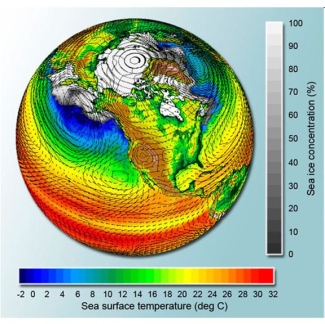
The passing of Doug Engelbart brings to mind John Markoff’s book “What the Dormouse Said.” The subtitle of the book is “How the Sixties Counterculture Shaped the Personal Computer Industry.” Engelbart was at the center of envisioning what networked personal computers could be. To some extent, we’ve just been coloring in the pictures that Engelbart drew toward the end of 1968.
The date of Engelbart’s death also marks the beginning of the end of the connection between LSD and the technology of personal computing. Engelbart was one of the early experimenters. And while you couldn’t say that his experimentation lead to his visions for technology, you can certainly say that nothing like that would happen today. Interest in our interior space may be at an all-time low. It simply lacks a decent return on investment.
The big demo set the boundaries of the vision, and the commercial technologists have spent the intervening years building it out. If the future wasn’t evenly distributed, it was the job of the personal computing industry to make sure that there was a networked personal computing device for every man woman and child in the country — and every other country too. That “future” is pretty evenly distributed now.
In the early days of the commercialized Network, we used to shake our heads at this company or that government agency and say: “they just don’t get the Internet.” At this point, I’d say that everyone “gets” the Internet and connected computing. Of course, no one gets the Internet in toto, but everyone gets enough of it. And despite the recent laments over the loss of the early spirit of the Network, like the man says: “the street finds its own uses for things.”

There hasn’t been much new vision since the days of ARC, PARC and PLATO. Philip K. Dick saw the dark side which shows up in our movies. Jaron Lanier’s ideas about virtual reality are migrating into the games we play in our living rooms. David Gelernter’s LifeStreams are turning in the various Tweet Streams, Facebook newsfeeds and photostreams. The techno-primativism of Burning Man somehow never really makes it out of the desert. What happens at Burning Man, stays at Burning Man. The engineers at Google admit to trying to make working versions of the computing technology simulated in the original Star Trek television show. And through the inflation of the series of tech bubbles, “technology” was transformed into what venture capitalists were willing to fund. By that definition, even Engelbart wasn’t able to secure funding to continue his work. The vision was frozen in time. What we have now are the Stacks — which is the total commercial exploitation of Engelbart’s original interrupted vision in the form of feudal central clouds.

Vision has an interesting relationship with technology. It’s vaporware if you don’t build it. Its success is marginal if it doesn’t work its way into the fabric of our lives. But vision is less about the technology we’re building, and more about how we might do things. For instance, when we think about Ted Nelson’s vision for the Network, we see the road not taken. Engelbart’s road was taken, and taken from him. The regret that Engelbart had was that his vision was never allowed to evolve and grow. He never saw the “mother of all demos” as the end of the road. The commercial demands around evenly distributing that particular future put an end to all alternate paths, even the ones Engelbart continued to imagine.

Once the vision becomes frozen, we are transformed from participants to consumers. Even the kind of “participation” that makes up the content of social media is largely a form of consumption. And “consumerism” as Timothy Morton likes to point out, is an invention of the romantic era. Recently, I was reading a collection of essays edited by Harold Bloom on Romanticism and Consciousness. I was struck by his description of a piece by Owen Barfield.
…A brief but profound chapter which I have excerpted from Owen Barfield’s “Saving the Appearances, a Study in Idolatry”. Barfield is a historian of human consciousness, who, in this remarkable book, traces and deplores our loss of “participation,” the awareness “of an extra-sensory link between the percipient and the representations.” The progressive loss of the sense of participation, over the centuries, results in an idolatry of memory images. In Barfield’s view, Romanticism arose as an iconoclastic movement, seeking to smash the idols and return men to an original participation in phenomena.
It seems that we’ve colored in all the pictures that Doug Engelbart left us. We’ve colored them in HD and 3D and in real-time streaming. It may be time to smash the idols and try to come up with a new set of pictures.






